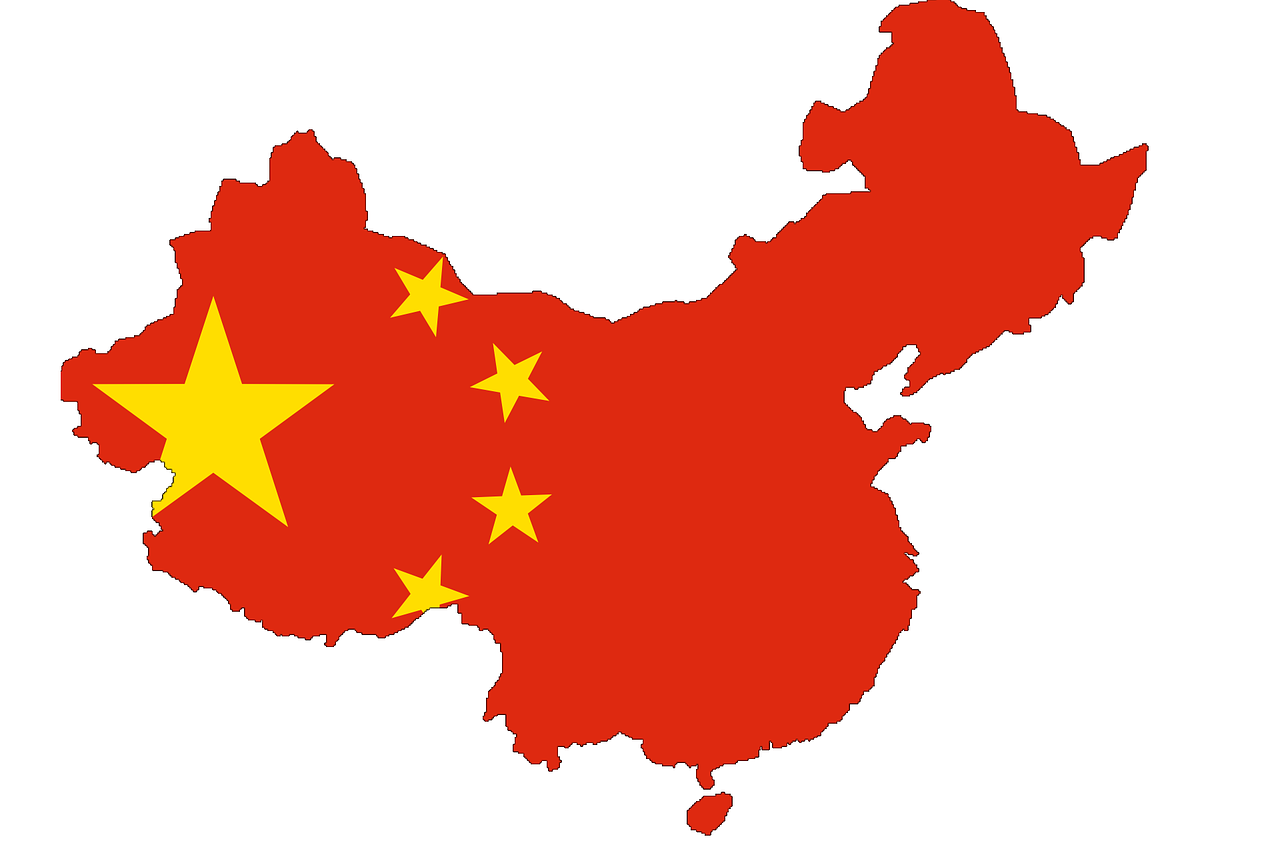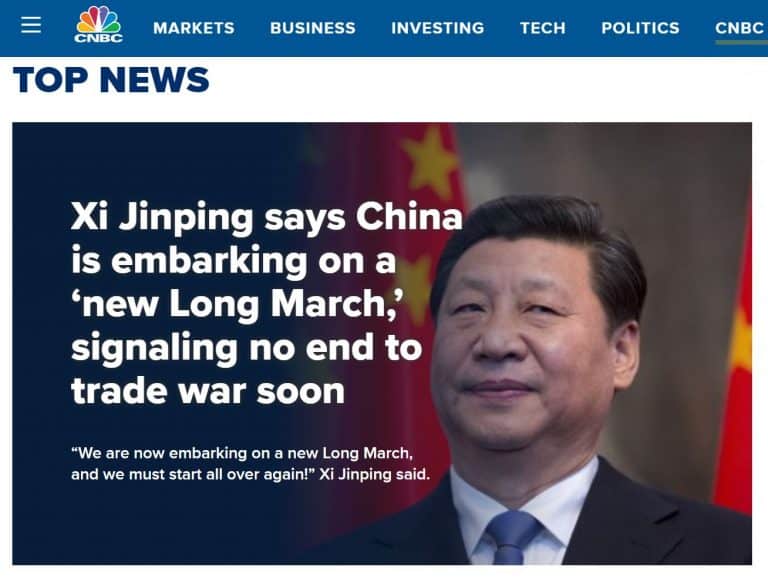The United States is in the middle of a “Tariff War” with China and it is being played as a game. It is not a war at all… it is a skirmish within the parameters of a much longer economic war. I’ve played chess since I was a small child and I’m fairly good. Chess is a game where you have to think many steps ahead and you must be more concerned with the final outcome than you are with any short-term self-inflicted damage.
Q1 hedge fund letters, conference, scoops etc

Played correctly, China could lose the near-term tariff skirmish, yet still quietly & slowly win the economic game. Checkmate.
We are highly in debt to China. They have given the U.S. Government over $1,000,000,000,000 ($1-Trillion) in exchange for a multitude of U.S. Treasury Bonds that pay interest to the Chinese for a certain number of years, usually 10 to 20 years. If China were to ever sell all of these bonds at once, early and on the open market, it would crash both our economy and theirs. It would be like getting mad and knocking the chess board over; they will not do this.
What they have always done when each of their individual Treasury Bonds reaches maturity is to roll the money back into brand new Treasury Bonds. They keep servicing our high debt and we keep paying them interest since they act as our bank.
So, all China has to do is to simply not roll the old bonds over into new bonds when each of these separate bonds reach maturity; instead, they take their principal back. This is not complicated; it requires one click of a computer mouse. Over a period of 10-15 years, all of this money, all $1-Trillion of it, would then have to be sent back to China. The trade tariffs are trifling in comparison.
May 21st CNBC headline:
RESULTS:
- The money flowing back to China would likely not have a really noticeable impact for about 10 years, but the Chinese have always thought “long term.”
- This slow transfer of money back to China would cause the Chinese currency, the RMB, to gradually rise in value and then to rapidly become quite strong starting in the early-2030’s.
- In turn, the value of the USD would decrease in value starting in the 2030’s, causing inflation and noticeable economic weakness in the United States, beginning around the same time. The Federal Reserve would then have to attempt to keep interest rates artificially low, causing even further weakness to the USD.
- The rise in the value of their RMB currency would eventually make the Chinese people wealthy and able to purchase ever more goods within China. There would then be strong and growing domestic consumption in China. The 1.5-billion Chinese people would buy Chinese goods rather than relying on the 300-million consumers in the United States to buy the Chinese goods. By 2030, there will be 5x more Chinese on the planet than there will be Americans.
- The Chinese government could use the $1-Trillion inflow to increase domestic projects, upping employment and further increasing the wealth and strength of the Chinese consumer.
- Other Asian countries would likely follow suit.
- The $1-Trillion outflow from the United States would definitely hurt the United States, but again, this would be a slow motion process.
- Checkmate in 10 years. In the 2030’s, as I’ve been predicting for ten years now, China and India and Asia will take over global leadership from the United States, and perhaps this is how it will happen.
In the meantime and for the next decade, the U.S. economy will continue to rule supreme. And, while we will have at least one big recession between now and then, we also likely have another decade left in this roaring U.S. stock bull market. In 2009 I started saying that the United States would become an economic powerhouse for the following 20 years, until around 2029. I’ve been correct during the past ten years and I believe that I will be proven correct over the next ten years. We’ll see. In my opinion, during the next four decades, each decade of this chess game will need to be played entirely differently. Low-flation leads to stagnant-hyper-inflation in the 2030’s (because the U.S. will just print money to buy up its own Treasury Bond debt); stagnant-hyper-inflation eventually leads to deflationary default in the 2040’s. By the 2050’s, perhaps our environmental and economic mess leads to a rebuilding of the world from the bottom up by our yet-to-be-born and much wiser children. Will I be correct? I’ll never know. But, as the old Gospel song says: “May all who come behind us find us faithful, after all our hopes and dreams have come and gone, and our children sift through all we’ve left behind.”
Important for clients… MARKET SUMMARY: The U.S. stock market is still in its bullish phase, although MarketCycle’s system of risk indicators (starting weeks ago in early May) had us move our client’s accounts from a 70% lower risk allocation to an almost 100% lower risk allocation. This allows us to still capture much of any up-move while also making any down-move less tragic (when viewed over the entirety of the difficult period) and this is a somewhat less worrisome position to be in during this advancing late-stage of the bull market. Inflation remains low and there is very little chance of any additional Federal Reserve interest-rate increase before December of 2019 (or perhaps later… or not at all). The U.S. still maintains the strongest relative strength over all other regions of the globe. Earnings momentum is still positive. Calculated U.S. economic recession chances 3 months out remain below 4%, which is still extremely low… so if the stock market corrects here, we likely move forward again after the drop is over.
Leading Economic Indicators show that the only countries on our planet that are not headed toward (temporary?) near-term economic weakness are Mexico, Brazil and India. That is a small list.
There is no political message intended behind the following chart. The momentum of U.S. job creation continues unabated. Jobs are created during bull markets and they fall during bear markets as the momentum becomes exhausted. Because we are in the late-stage of the market cycle, we may see jobs start to curl down again before too long (in a smaller version of 2008 & 2009). Jobs track the big movements of the stock market. If this starts many months before the next election in the United States, then we will likely have a Democrat in the White House in 2020. If job numbers start to fall after the election, then President Trump might have another four year term. Regardless, when the next unavoidable recession is over, a new bull will emerge and the market cycle will start all over again. (We have to remember that, for knowledgeable investors, both bull and bear markets can be equally profitable.)
And finally this: Did the recent new tax cut in the United States pay for itself, as promised? The non-partisan Congressional Research Service found that Gross Domestic Product (GDP) remains almost identical to the Obama years (only very slightly higher @ 2.9%). So, GDP growth will offset less than 5% of the tax revenue lost as a result of the tax cuts, meaning that “paying for itself” may come up 95% short and this is actually an extremely large loss of U.S. tax revenues coming at the same time that expenditures of large ticket items are increasing (such as military weapons).
Thanks for reading! Please share with your friends and on Facebook. We do not advertise so we depend on our friends and clients for getting the word out.
MarketCycle Wealth Management is in the business of guiding investment accounts (across the globe) through choppy water. The fee is low and the first three months are at no charge.
SUBSCRIBE to this free (no spam) blog via the website.
SUBSCRIBE to our daily paid members REPORT site via the link on this website.
Article by Stephen Aust, MarketCycle Wealth Management


